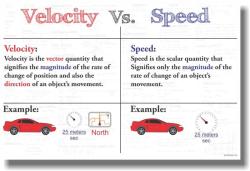How does density affect the weight?
Density does not directly affect weight; instead, it is one of the factors that influence the weight of an object. Weight is determined by the force of gravity acting on an object, while density is a measure of how much mass is contained within a given volume. However, the density of an object can indirectly affect its weight in the following ways:
Weight Variation: Objects with different densities but the same volume will have different weights. The denser an object is, the more mass it has in a given volume, and therefore, it will weigh more when subjected to the same gravitational force.
Buoyancy: In a fluid (such as air or water), the density of an object relative to the density of the fluid affects whether the object will float, sink, or remain suspended. An object that is less dense than the fluid will float, while an object denser than the fluid will sink. The weight of the object influences whether it will displace enough fluid to float or sink.
Archimedes' Principle: Archimedes' principle states that the buoyant force acting on an object submerged in a fluid is equal to the weight of the fluid displaced by the object. The density of the object and the fluid both play a role in this principle. An object with higher density than the fluid will displace less fluid, experiencing a smaller buoyant force and thus weighing more when submerged.
Composite Objects: The density of composite objects (objects made up of multiple materials) is influenced by the densities of their constituent materials and their arrangement. For example, a ship can float even though it is made of denser materials like steel because it is designed in a way that decreases its overall density and increases buoyancy.
Weight and Mass Relationship: Weight is directly proportional to mass, and mass is related to both the volume and density of an object. The relationship can be expressed as Weight (W) = Mass (m) × Gravitational Acceleration (g). Therefore, an object's density affects its mass (mass = density × volume), which in turn affects its weight.
In summary, while density itself does not affect the gravitational force (weight), it indirectly influences an object's weight by determining its mass. Objects with different densities will have different masses for the same volume, which results in different weights when subjected to the force of gravity. Additionally, in fluid environments, density plays a crucial role in determining whether an object will float or sink and how much buoyant force it experiences.
Understanding the Relationship Between Density and Weight
Density is a measure of how much matter is contained in a given volume. It is calculated by dividing the mass of an object by its volume. Weight is a measure of the force of gravity acting on an object. It is calculated by multiplying the mass of an object by the acceleration due to gravity (9.81 m/s^2 on Earth).
Density and weight are related in that the denser an object is, the heavier it will be. This is because the more matter an object has, the more gravity will act on it.
Density as a Fundamental Property of Matter
Density is a fundamental property of matter, meaning that it cannot be changed without changing the substance itself. For example, the density of water is always 1000 kg/m^3, regardless of the shape or size of the water container.
How Density Affects the Weight of Objects
The density of an object affects its weight in the following way:
- Objects with a higher density will weigh more than objects with a lower density, assuming they have the same volume. For example, a lead ball and a wooden ball with the same volume will weigh differently, with the lead ball being heavier. This is because lead has a higher density than wood.
- Objects with the same density will weigh the same, assuming they have the same volume. For example, two water balloons with the same volume will weigh the same, even if they are different shapes or sizes.
Practical Applications of Density-Weight Relationships
There are many practical applications of density-weight relationships. For example, density is used to:
- Identify and classify substances. The density of a substance can be used to identify it and distinguish it from other substances. For example, the density of gold is 19.3 g/cm^3, while the density of iron is 7.87 g/cm^3. This means that a gold cube with a volume of 1 cm^3 will weigh 19.3 grams, while an iron cube with a volume of 1 cm^3 will weigh 7.87 grams.
- Calculate the mass of an object. The density and volume of an object can be used to calculate its mass. For example, if a piece of wood has a density of 0.5 g/cm^3 and a volume of 100 cm^3, then its mass is 50 grams.
- Design and build objects. Density is used to design and build objects with specific properties. For example, airplanes are made with lightweight materials like aluminum and carbon fiber to reduce their weight and improve their fuel efficiency.
Experimentation and Measurement of Density and Weight
The density and weight of an object can be measured using a variety of methods. One common method is to use a balance to measure the mass of the object and a graduated cylinder to measure its volume.
To measure the density of an object using a balance and a graduated cylinder:
- Fill the graduated cylinder with water to a known volume.
- Suspend the object from the balance hook and lower it into the graduated cylinder without touching the bottom.
- Record the new volume of water in the graduated cylinder.
- The density of the object is calculated by dividing the mass of the object by the volume of water displaced.
The weight of an object can be measured using a scale.
To measure the weight of an object using a scale:
- Place the object on the scale.
- Record the weight reading.
Density and weight are important concepts in physics and chemistry. They have many practical applications in a variety of fields, including engineering, manufacturing, and medicine.












